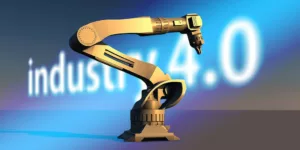Forecasts have long been the backbone of the manufacturing industry. After all, typically by the time a customer purchases a product, it already exists. The name of the game in manufacturing has been trying to accurately forecast how many units would be financially prudent to make. Guessing wrong meant either experiencing product shortages or costly surpluses. And to be sure, many companies still use a forecasting model to drive manufacturing decisions.
But a new approach is quickly taking the industry by storm: demand-driven manufacturing, which entails basing production on actual orders rather than hypothetical forecasts. Only in our new era of increasing interconnectivity is true demand-driven manufacturing possible because it depends so closely on real-time communication and workflow syncing.
The Industrial Internet of Things (IIoT)
As Assembly Mag points out, one key aim in pursuing demand-driven manufacturing is to synchronize:
- Workforce
- Methods
- Materials
- Machines
- Information
But in order to do so, manufacturers must have accurate insight into every step in their processes, including a firm handle on factors like output, downtime, bottlenecks and more.
That’s where the Industrial Internet of Things (IIoT) comes in. This network of interconnected devices exchanges important data using tools like sensors, electronics and manufacturing software. Assembly Mag also notes that the IIoT lets manufacturers “collect, analyze and share data about materials, machines and processes in the production environment, in real time.”
Data Analytics: Behind the Scenes of the IIoT
The IIoT is useful for collecting data, which is a crucial start. However, competitive manufacturers need a way to analyze said data in real time—from multiple sources. As one expert writes for Forbes, “Innovations in hardware, connectivity, big data, analytics, and machine learning are converging to create massive value-creation opportunities.”
Basically, to meet demand, you must first be able to quantify it. And to do that, you’ll need responsive data analytics. We’ve entered an era in manufacturing when having the tools to produce goods is just the tip of the iceberg. Half the battle is pulling insights from company data, so you can make informed manufacturing decisions, especially pertaining to demand.
Meeting demand is impossible without a comprehensive view of your day-to-day operations, but also your second-to-second operations. The IIoT helps manufacturers stay tuned in to what’s happening in real time. If a machine goes down, that means a faster fix. If a bottleneck emerges, decision-makers can address it proactively when they receive a notification at a central command station. If your manufacturing company is experiencing quality issues or wasteful practices, data analytics can clue you in, so you can make timely adjustments.
Modern data analytics are able to overcome more traditional silos, drawing on information from many sources to return search-driven and AI-driven insights alike. In terms of demand, distribution teams can use the sales analytics platform as a sales tracker, monitoring how products are selling so the production line can fine-tune on the fly. Sales forecasts are still useful, but now the technology exists to fill in the gaps and cut down on the time between an event happening and the information making it back to the right employees.
Demand-Driven Manufacturing: The Bottom Line
Over half (56 percent) of best-in-class manufacturers are “synchronizing demand signals with manufacturing execution” as their number one strategic action. Whereas before companies had to rely on forecasts alone, now technology enables manufacturers to utilize real-time data courtesy of analytics platforms and IIoT data. The smaller the gap between production and feedback, the more efficient it will be.








